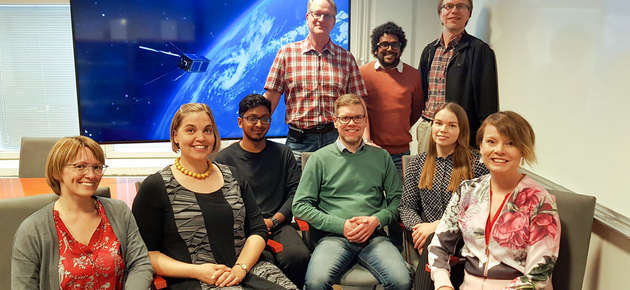Kvarken enters the space age – Space economy project lead by University of Vaasa receives EU ...


According to plans, Kvarken Space Center will become a long-lasting innovation centre of the new space economy, helping businesses in the Kvarken region on both sides of the gulf to develop business opportunities and use available space data. The goal is to generate a strong ecosystem that utilises space in the Kvarken region.
– Through remote sensing, telecommunications and positioning and timing, space data will offer a wide range of new business opportunities for the agriculture and forestry sector, environmental monitoring, traffic, the maritime sector, energy economy, economic forecasting and many other fields, says Heidi Kuusniemi, who is the coordinator of the project and the director of the Digital Economy research platform at the University of Vaasa.
The space industry has gone through a major transformation. A new operating model, New Space Economy, has emerged in the industry in the past few years that enables an easier and less expensive access to space. Thanks to the development of small satellites and private launch service providers, both satellites and their launch have become less costly. This has significantly increased the number of satellites sent into space.
– Kvarken Space Center needs to ensure that the businesses and actors in the region are able to participate in this new business, understand the latest technologies and are ready to implement and utilise them, Kuusniemi continues.
The purpose of the centre is to share knowledge and implement various demonstration projects to bring the expertise of regional businesses to the level needed to independently manage their own space business. The centre will cooperate with regional universities and development companies to train experts and attract them to the region.
KvarkenSat small satellite into space and ground station antenna to the roof of Tritonia
Together with businesses and actors in the Kvarken region, the centre will be designing, developing and launching into space its own small satellite in a few years with the support of Aalto University and Luleå University of Technology.
– The payload of KvarkenSat will be designed together with the stakeholders of the project, and it will demonstrate the technological possibilities of the new, commercial space business, says Heidi Kuusniemi.
The additional plan is to install a ground station antenna for satellite data reception on the roof of the University of Vaasa's science library Tritonia. An easy portal will be created based on data provided by the antenna as well as open space-based data sources to openly share and promote data that is relevant to the Kvarken region, tools included. According to Kuusniemi, this would give businesses new opportunities to utilise in products and services.
Project lead Kendall Rutledge from Novia comments that he wishes to show local operators what kind of opportunities are made possible by the satellites of the European Space Agency (ESA) and the Iceye and Planet satellites, for example.
– We will demonstrate together with the Swedish University of Agricultural Sciences, the University of Vaasa, Åbo Akademi, Aalto University and other parties how users can start using space data and apply it to their own processes. For this, we will be building a digital portal, Rutledge says.
Space is not rocket science
One of the goals of the project is to also raise the interest of other communities, students and citizens in the region towards space economy and to increase their awareness of the topic. Also schools, such as Vaasan lyseon lukio and Gymnasiet i Petalax secondary schools, can utilise the project in their teaching.
– We will be organising KvarkenSat Innovation Challenge, which is a yearly hackathon based on space-based data aimed for both companies and students. There will also be other workshops and science education relating to space and space economy for pupils and students, says Mari K. Niemi, director of the InnoLab research platform at the University of Vaasa.
– This is a project that builds the community and allows businesses, universities and citizens in the region to get involved. Other valuable new assets established through the project are international networks and cooperation partnerships. New space economy is a rising field in the world and the project will place us at the forefront, Niemi continues.
Further information:
Heidi Kuusniemi, Director, Digital Economy research platform, University of Vaasa, firstname.lastname(at)uwasa.fi, +358 29 449 8504
FACTS
Project name: KvarkenSpaceEco
Project's lead partner: University of Vaasa
Other project partners: Novia University of Applied Sciences, Umeå University, Luleå University of Technology, MUOVA (VAMK), Åbo Akademi, Hanken, Swedish Institute of Space Physics (IRF), Swedish University of Agricultural Sciences SLU, Aalto University
Region: Kvarken, which includes Västerbotten County in Sweden and the regions of Ostrobothnia, Central Ostrobothnia and South Ostrobothnia in Finland
Timespan: 9/2019–06/2022
External funding: EU Interreg Botnia-Atlantica EUR 1.86 million